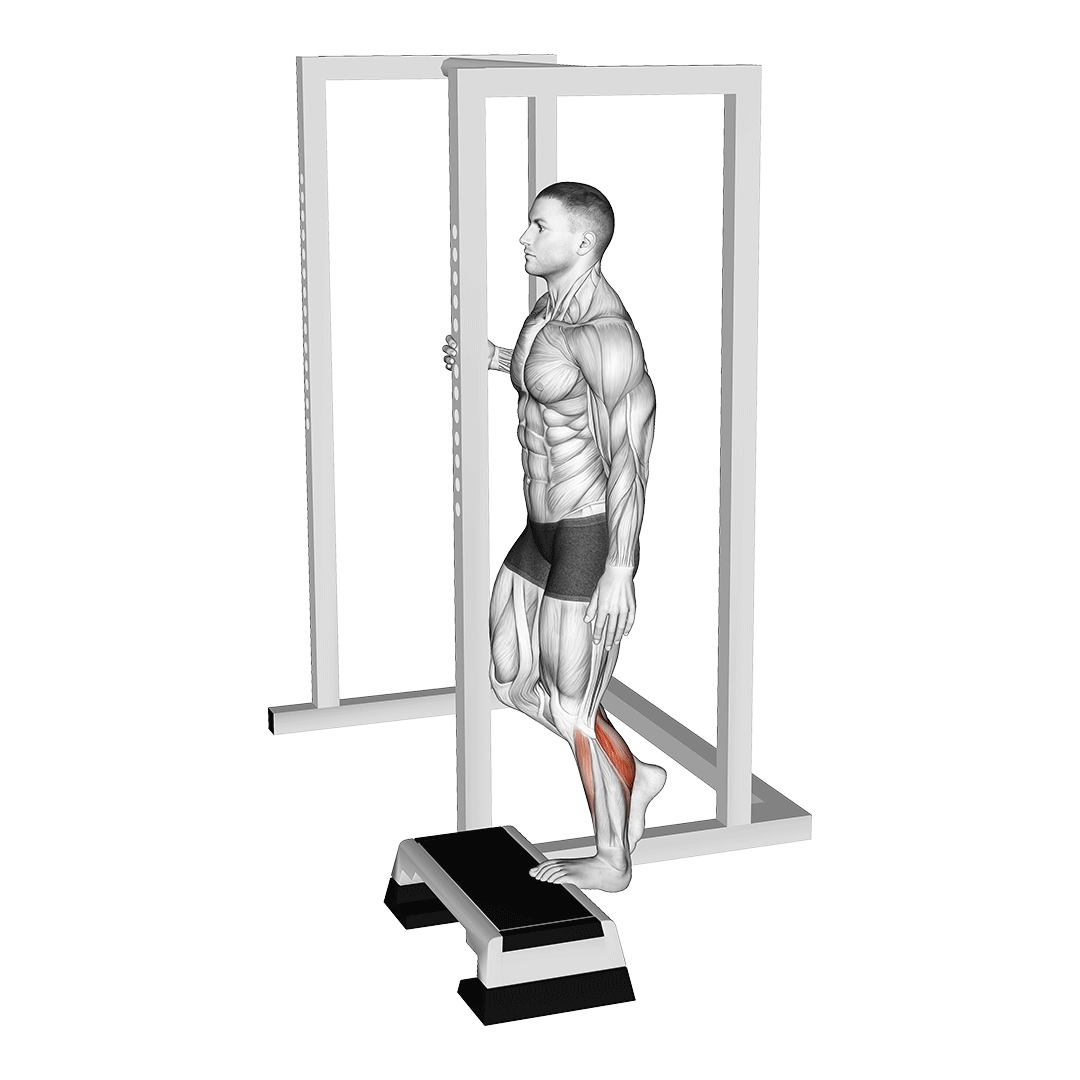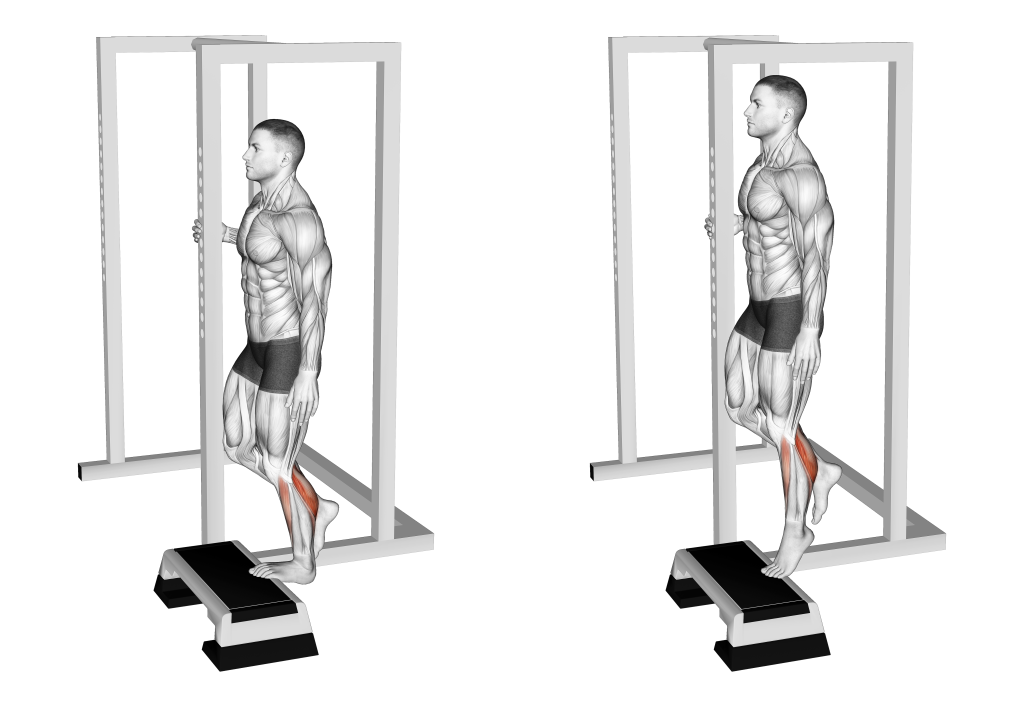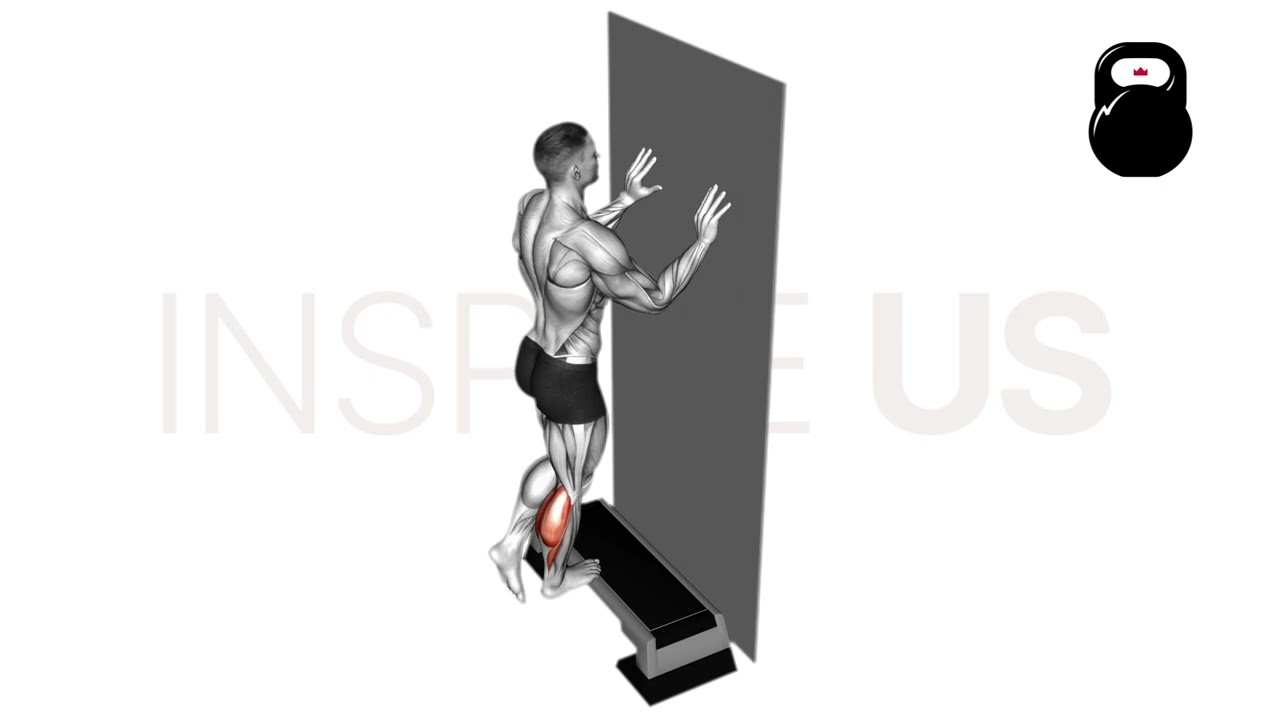Single Leg Calf Raise Exercise Overview: Muscles Worked and More
Single leg calf raises are a lower body isolation exercise meant to build mass and strength in the posterior calf muscles.
In most cases, the single leg variant of calf raise is chosen if the lifter has a noticeable imbalance in the strength or size of their individual calf muscles.
That, or if the amount of weight they have is limited and insufficient for maintaining proper training intensity with conventional two-legged calf raises.
Single Leg Calf Raise at a Glance
Equipment Requirements
Elevated Platform, Weights (Optional)
Main Muscles Targeted
Gastrocnemius, Soleus
Difficulty
Advanced
Sets, Reps, and Load Recommendations
3-6 Sets of 15-30 Repetitions With Bodyweight - OR - 2-5 Sets of 8-20 Repetitions With a Light Load
How to Do a Single Leg Calf Raise
- To perform a single leg calf raise, the lifter will begin by placing both feet atop an elevated platform, allowing both heels to hang off the edge. The arms may be used to further aid with balancing on one leg - or otherwise gripping the weights, if using any.
The knee of the working leg should be fully extended, whereas the non-working foot should be raised entirely off the platform once the repetition begins. - Balancing on their working foot, the lifter squeezes their calf muscles and presses through the balls of their foot, raising themselves upwards until the ankle is near full extension.
- With the working ankle now extended, the lifter allows gravity to slowly draw their heel back downwards as they keep tension in their calf muscles.
- The repetition is considered complete once the heel of the working foot is at a lower elevation than the toes.
Additional Tips:
Though single leg calf raises are quite simple, that doesn’t mean they’re ineffective. So long as sufficient intensity and volume are achieved each set, calf raises are likely all you’ll need for sufficient calf development.
Apart from ensuring intensity and volume are optimized, ensure that the foot itself is positioned far enough off the platform to maximize range of motion.
The outer half where the toes attach (the “ball” of the foot) should be the only part of the foot atop the platform, whereas the rest should be entirely unsupported and hanging freely.
Sets and Reps Recommendation:
If performing the exercise without additional weight, 3-6 sets of 15-30 repetitions should be enough for novices and intermediates.
Otherwise, if using a light or even a moderate amount of load, 2-5 sets of 8-20 repetitions will suffice.
What Muscles do Single Leg Calf Raises Work?
Single leg calf raises are an isolation exercise, targeting the calves as the sole prime mover muscles.

These calf muscles are the gastrocnemius and the underlying soleus muscle, with the gastrocnemius being worked to a comparatively greater degree solely due to its larger size and more advantageous attachments.
Common Single Leg Calf Raise Mistakes to Avoid
As simple as the single leg calf raise can be, the following mistakes should still be avoided so as to get the most out of your sets.
Poor Range of Motion
One of the most important aspects to optimize with calf raises is achieving a proper range of motion.
While the use of an elevated platform aids greatly with this, lifters should nonetheless still make an effort to lower their heels to the limits of their ankle mobility at the start and end of each rep.
Likewise, the highest point of each repetition should have the calves fully engaged through maximal ankle extension.
Completing a full range of motion ensures that both major calf muscles are worked to their fullest capacity - and can even aid with ankle mobility, as a secondary benefit.
Incorrect Foot Positioning
As mentioned previously, range of motion and actual calf muscle contraction can be limited by the position of the foot atop the platform.

More accurately, the more of the foot that is atop the platform, the less effective the exercise is. Only the forefoot (the distal half) should be supported, whereas the heel and much of the arch of the foot should be hanging off the platform.
Failing to Control Negative
Properly signaling muscular hypertrophy is far more effective when done through a sufficient time under tension during eccentric contraction. This means controlling the negative and lengthening it to almost double the time it would take to complete the initial concentric portion of the rep.
Apart from being more effective at developing the calves, controlling the negative phase will also greatly aid in reducing injury risk and maintaining proper balance.
Toes Pointing Inwards/Pigeon-Toeing
Outside of aiming to target the medial gastrocnemius head to a greater degree - allowing the toes of the working foot to point excessively inwards can disbalance the lifter and increase the risk of the ankle rolling, leading to acute injury.
If you wish to perform calf raises pigeon-toed so as to better isolate a specific muscle, the conventional two-legged variation may be safer.
Who Should Do Single Leg Calf Raises?
Single leg calf raises are as isolating of a calf exercise as they come. Bodybuilders, athletes with calf-specific physical limitations or individuals rehabilitating an injury can all greatly benefit from the movement’s specificity.
Of course, avoid the single leg calf raise if you have a history of foot, ankle or calf injuries - especially those relating to the achilles tendon.
References
1. Ema R, Ohki S, Takayama H, Kobayashi Y, Akagi R. Effect of calf-raise training on rapid force production and balance ability in elderly men. J Appl Physiol (1985). 2017 Aug 1;123(2):424-433. doi: 10.1152/japplphysiol.00539.2016. Epub 2017 Jun 1. PMID: 28572499; PMCID: PMC5583613.

